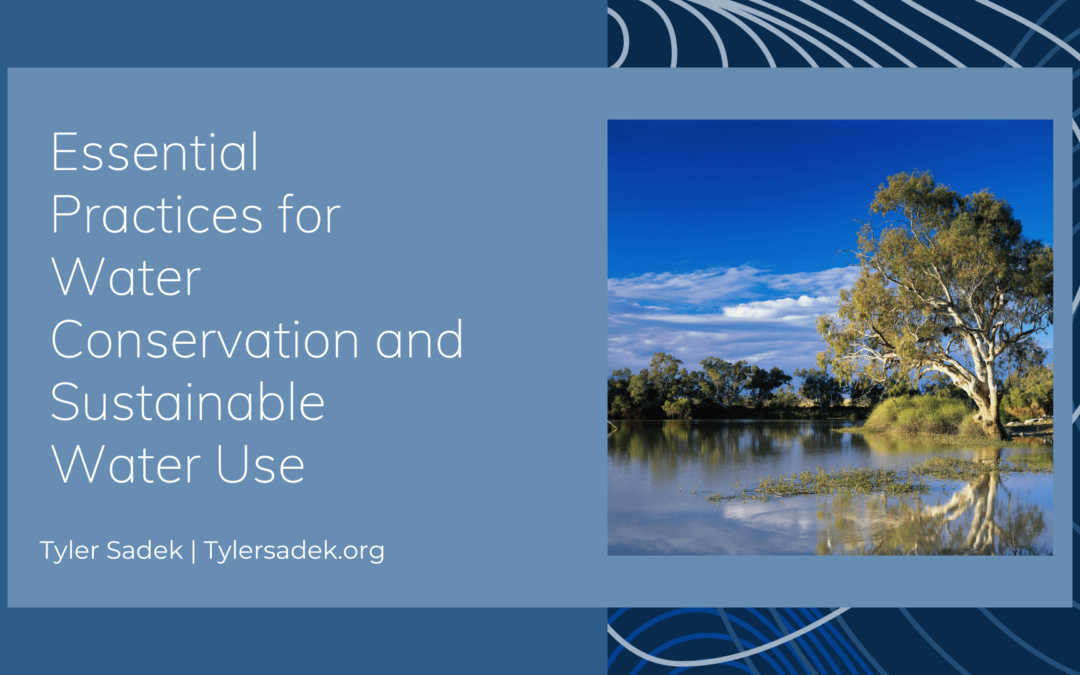Water is a precious resource that is essential for life, and it is crucial that we adopt sustainable practices to conserve and efficiently use this finite resource. With increasing population growth and the impact of climate change, water scarcity is becoming a pressing issue in many parts of the world.
1. Fix Leaks and Dripping Faucets
A small leak may seem insignificant, but it can waste a significant amount of water over time. Regularly check your plumbing system for leaks and promptly repair any dripping faucets or leaking pipes. This simple practice can save gallons of water each day and reduce unnecessary water waste.
2. Install Water-Efficient Fixtures
Upgrading to water-efficient fixtures can make a significant difference in water conservation. Install low-flow showerheads, faucets, and toilets, which are designed to reduce water consumption without compromising functionality. These fixtures use less water without sacrificing performance, helping to conserve water while still meeting your daily needs.
3. Practice Responsible Outdoor Watering
Outdoor water use often accounts for a large portion of residential water consumption. To conserve water outdoors, follow these practices:
– Water your lawn and plants during the early morning or late evening to reduce evaporation.
– Use mulch around plants and trees to retain moisture in the soil and reduce the need for frequent watering.
– Group plants with similar watering needs together to avoid overwatering or underwatering.
– Consider using drought-tolerant plants that require less water to thrive in your landscaping.
– Collect rainwater using rain barrels and use it for watering plants instead of relying solely on municipal water sources.
4. Adopt Water-Smart Landscaping
Traditional lawns require significant amounts of water to maintain. Consider alternatives to traditional lawns, such as xeriscaping or native plant landscaping. These methods involve choosing plants that are adapted to the local climate and require less water to thrive. Additionally, use landscape design techniques that minimize water runoff, such as contouring and installing rain gardens, which allow water to infiltrate the soil instead of flowing off the property.
5. Practice Mindful Indoor Water Use
In addition to fixing leaks and installing water-efficient fixtures, there are other simple practices you can adopt to reduce water waste indoors. Turn off the faucet while brushing your teeth or lathering your hands with soap. Use the dishwasher and washing machine for full loads to maximize water efficiency. Consider reusing water when possible, such as collecting and repurposing water from rinsing fruits and vegetables for household plants.
6. Educate and Raise Awareness
Education and awareness are key to fostering a culture of water conservation. Share information about the importance of water conservation with family, friends, and community members. Encourage others to adopt water-saving practices and explain the benefits of sustainable water use. Community outreach programs and educational campaigns can help raise awareness and encourage collective action toward water conservation.
7. Support Policy and Infrastructure Changes
Individual actions alone cannot solve water scarcity issues. It is crucial to support policy changes and infrastructure investments that promote sustainable water management. Advocate for water-efficient building codes, water reuse systems, and investments in water infrastructure to improve water conservation efforts at a broader scale.
Water conservation and sustainable water use are essential for the long-term health of our communities and the environment. By implementing these essential practices in our daily lives, we can contribute to the conservation of this precious resource. Every drop of water we save through mindful consumption and responsible practices can make a significant impact in ensuring a sustainable water future for generations to come.

